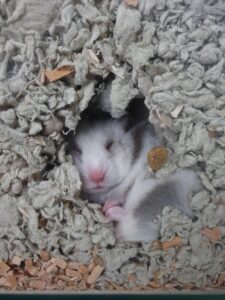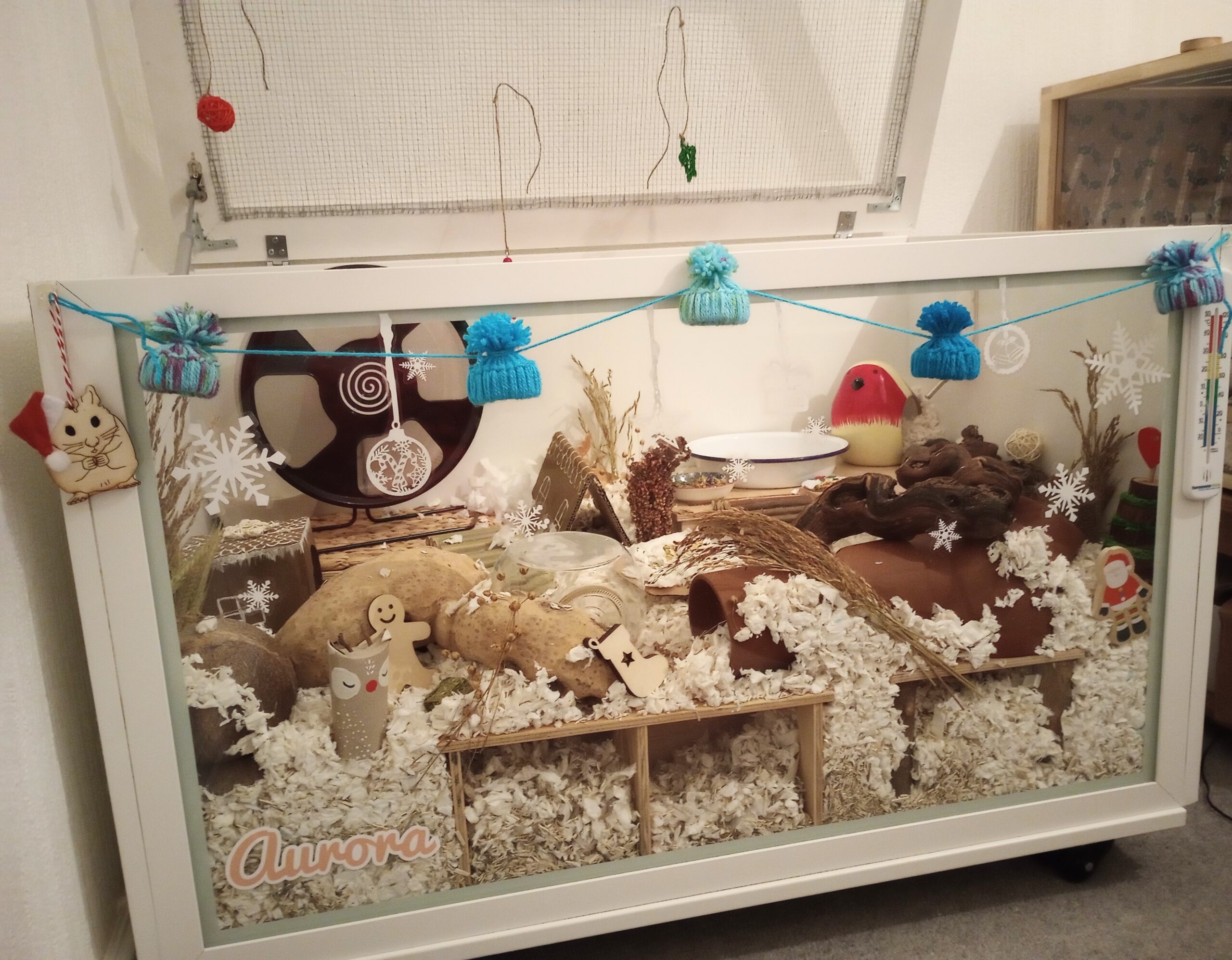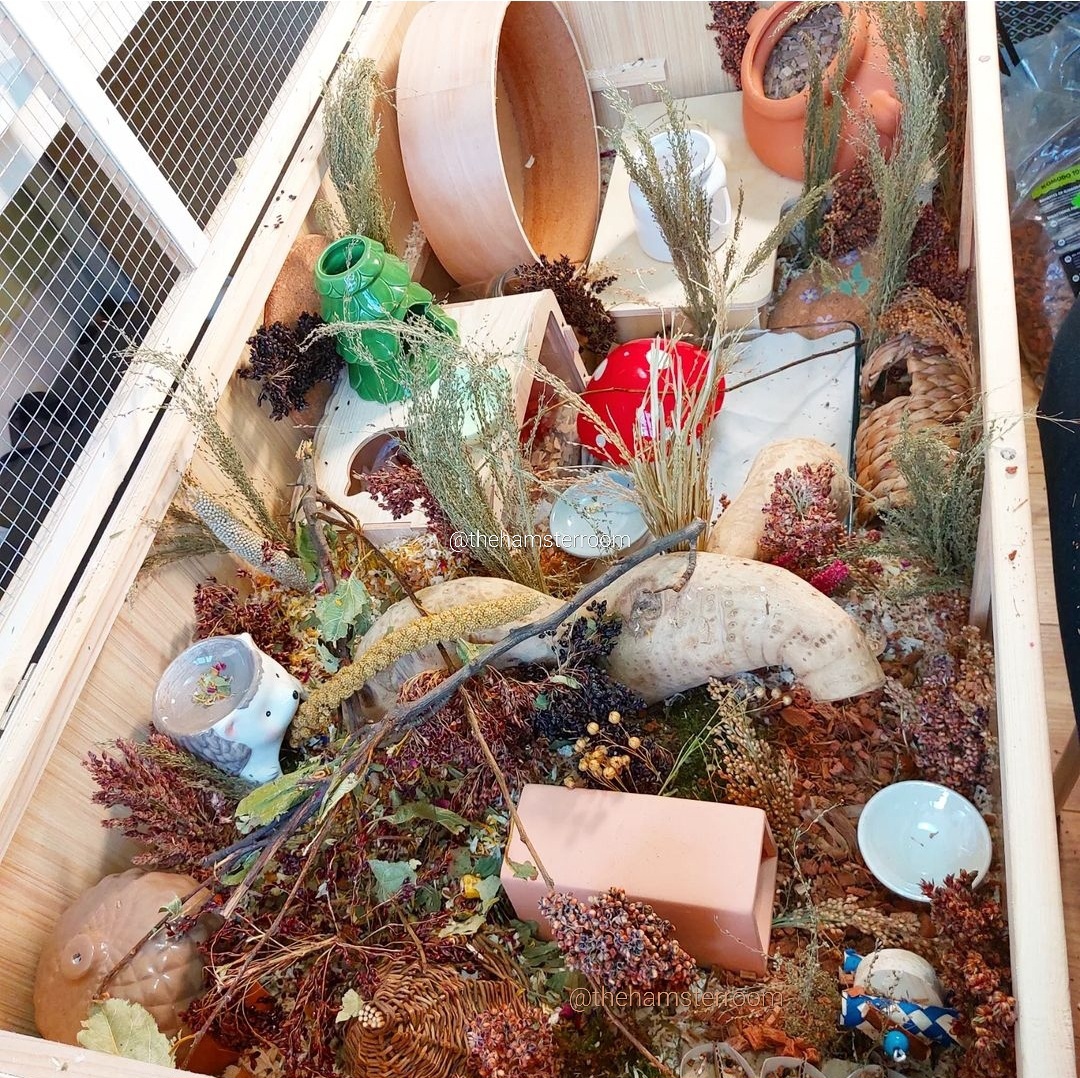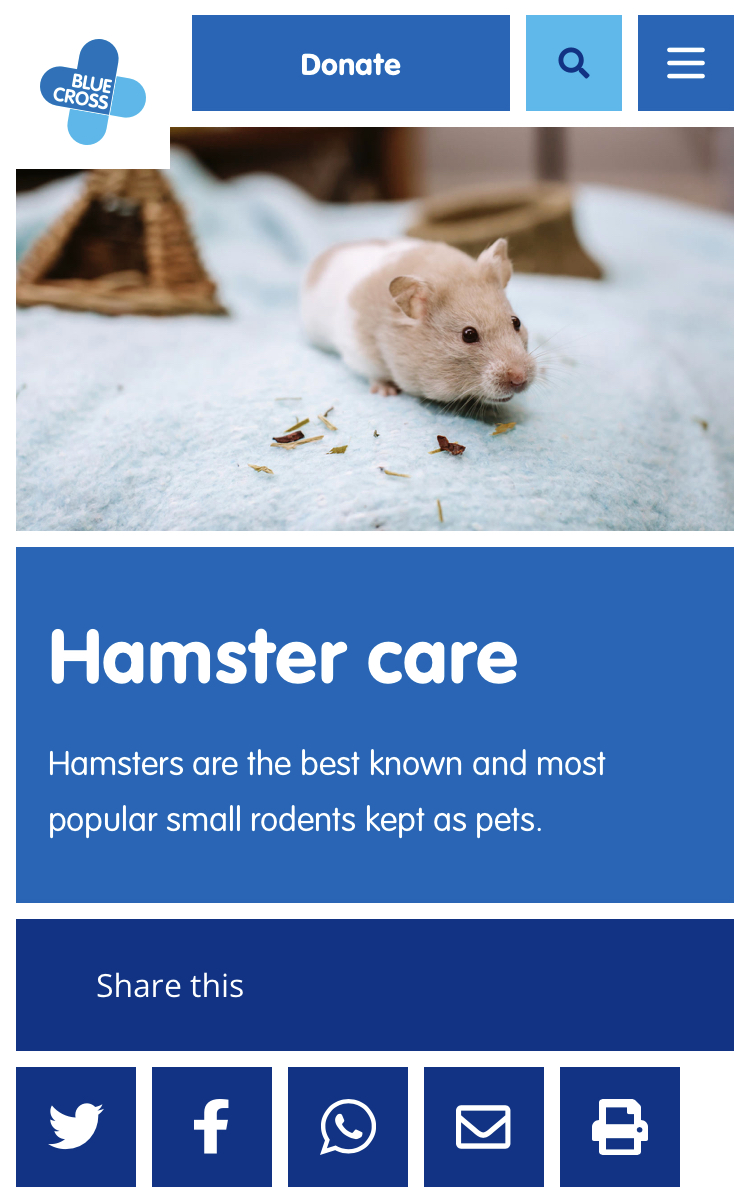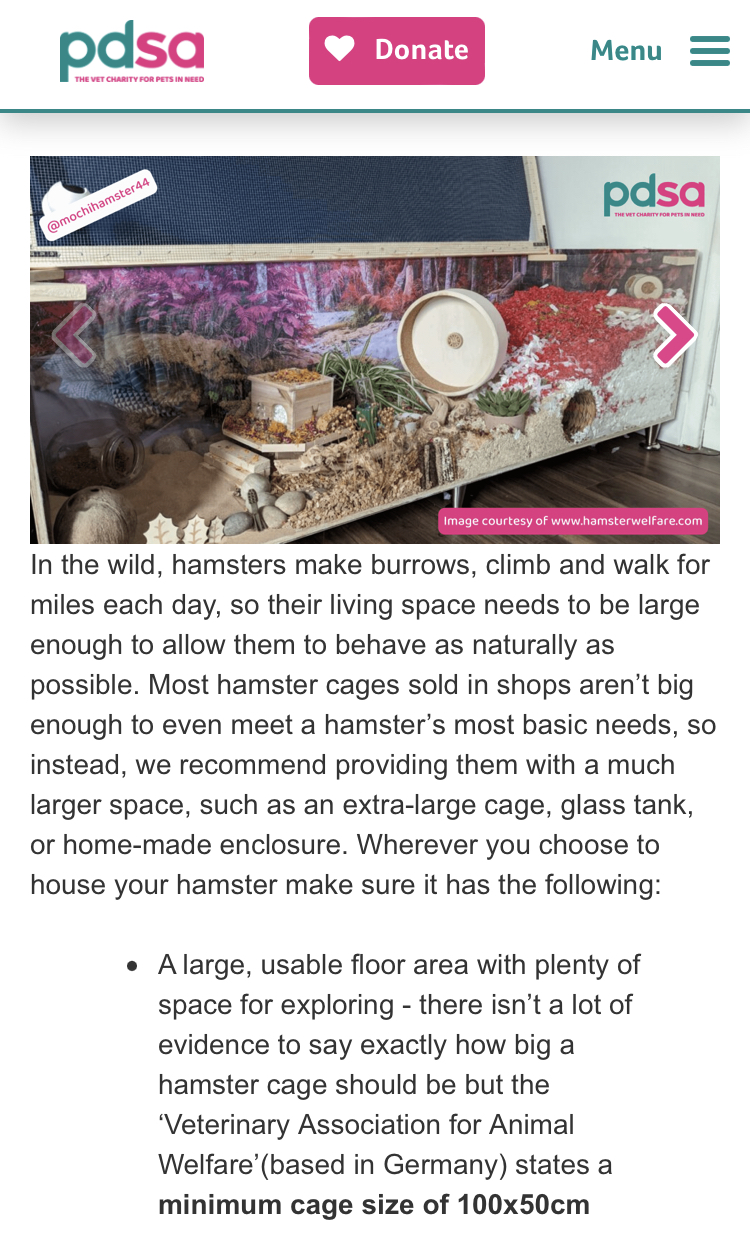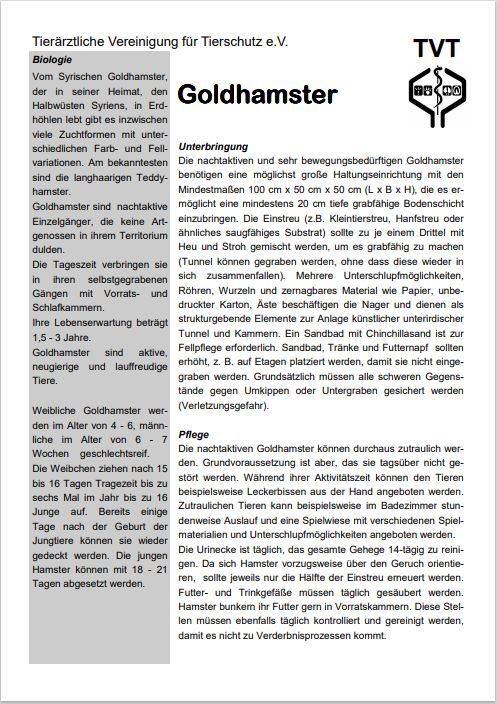Chews
Chew toys such as wooden toys, pine cones or wood are beneficial for your hamsters teeth. Avoid using edible toys which are made from compressed sawdust, they often have flavours or honey and this will encourage the hamster to eat them as it makes it seem like food. Unfortunately, ingesting sawdust can cause a fatal internal blockage.
Cleaning
Spot Cleaning of soiled bedding is a recommended technique that will also reduce smell. With a big enough enclosure you may not need to do a full clean for many weeks.
Do not use any bleaches or chemicals to clean the cage, make sure the products clearly state “Pet safe”.
Your hamster itself does not need cleaning as they groom themselves, NEVER bath or make your hamster wet. Please look at our Hamster Sand Bath page for more information.
Enrichment
Adding interesting and stimulating items into the enclosure that simulate a natural environment will help keep your hamsters mind busy and make them feel safe. Different textures such as coco soil, beach chips and coco chips. Chew toys such as wooden toys or pine cones (see Chews). Cork logs and Hides (see Hides). Sprays such as millet, poppy heads, wheat and more (see Sprays). Also Forage such as dried flowers and dried insects (see Forage).
Exercise
See Wheel/Playpen
Food
Hamsters are omnivores and in the wild they eat both plants and meat. In addition to the seed mix you can also feed your hamsters insects and fruit.
The most appropriate seed mix to feed your hamster is a species specific complete mix. Syrians and dwarf hamsters have different diets naturally in the wild, so their diet in captivity should reflect that as best as possible. Species appropriate mixes from places like Getzoo, have up to 35 ingredients that are all natural, and much more beneficial for your hamster than commercial seed mixes found in pet stores. These pet store mixes are often filled with low quality ingredients, have lots of fillers like hay and corn. They do not offer enough variety or nutrients for a hamster to thrive.
Recommended complete mixes:
-Rodipet
-Getzoo
-Maxizoo
-Mixerama
-Bunny Nature EXPERT (not basic)
A list of foods your hamster can and can not eat can be seen below:
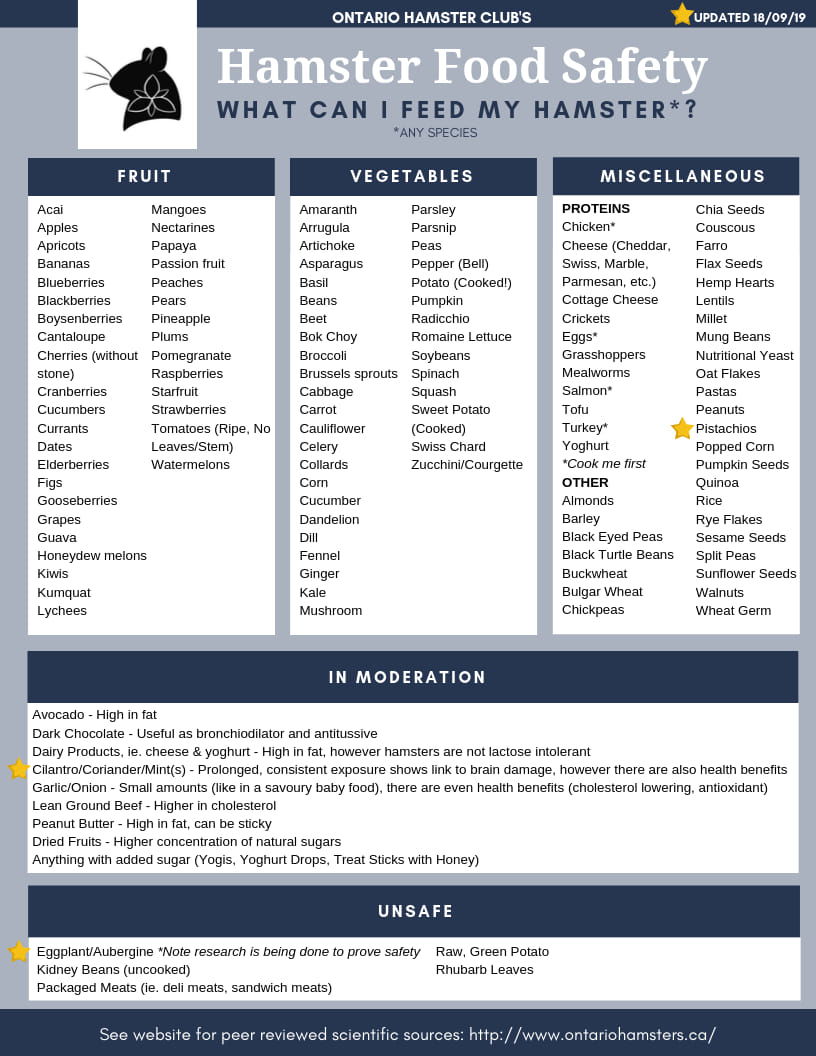
Forage
Hamsters love gathering and storing their food and adding forage to the enclosure can really make your hamsters day. It is recommended to hide and scatter feed different items of forage. There are many different types of dried herbs, dried flowers, leaves, grasses, fruit and dried insects that you can use. You can buy ready made forage mixes which contain a whole variety forage at a reasonable price. Please make sure you buy from a reputable source who know what forage is safe and not safe for hamsters.
Hamsterscaping
Some people take pride in providing a natural looking environment, with paths, sectioned areas and bridges (please place moss over any gaps on the bridge to prevent legs getting trapped). These enclosures can look like a work of art and it’s rewarding to see a hamster happily living in this environment, this hobby is referred to as Hamsterscaping. Please take a look at the below video for a wide range of substrates that can be used in the enclosure.

